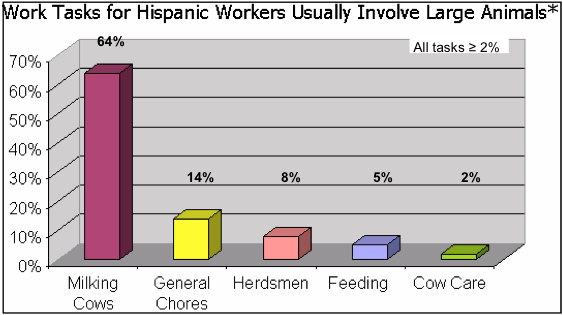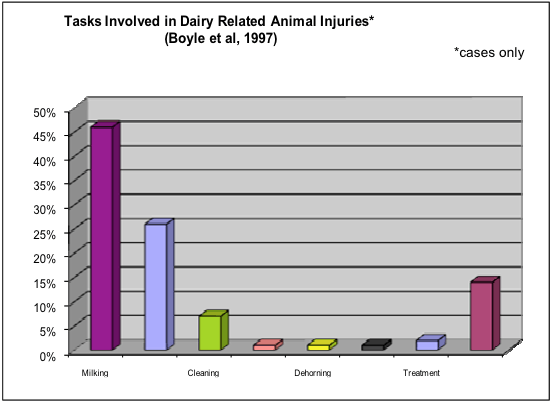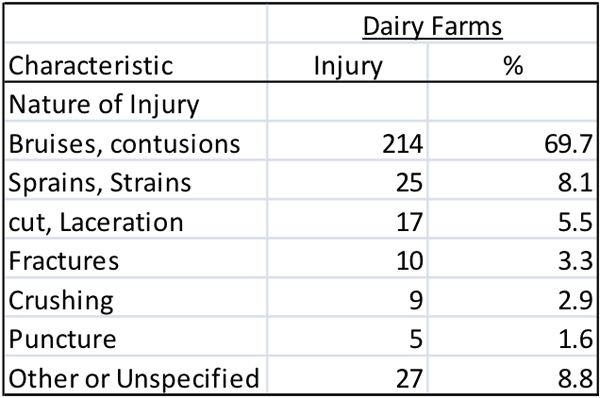Animal Handling Injuries
Hispanic Dairy Workers
Table 1. Summary of Work-Related Injuries

Roman-Muniz IN, Van Metre DC, Garry FB, Reynolds SJ, Wailes WR, Keefe TJ, 2006. Training methods and association with worker injury on Colorado dairies: a survey. J Agromedicine 11(2): 19-26.

* Figures based on NYCAMH/NEC Dairy Workforce Study
Reference: Pratt DS, Marvel LH, Darrow D, Stallones L, May JJ and Jenkins P. 1992. The Dangers of Dairy Farming: The In- jury Experience of 600 Workers Followed for Two Years. Am J Ind Med. 21:637-650.
Circumstances Surrounding Dairy Injury Events

- Milking – milking by hand, milking into container, milking into a pipeline.
- Feeding – use of tractors, skid steers, augers, wheel barrels, forks , buckets and manual labor.
- Cleaning – removing manure from barn, lots or pens.
- Footwork – trimming/ doctoring hooves for maintenance or health.
- Dehorning – removing horns with a hot iron, saw, wire or gouge dehorner.
- Calving – assisting with difficult births.
- Treatment – surgery, vaccinations, implants, delousing.
- Other – herding, fencing, etc.
Boyle D, Gerberich SG, Gibson RW, Maldonado G, Robinson RA, Martin F, Renier C and Amandus H. 1997. Injury from Diary Cattle Activities. Epi. 8(1):37-41.
The Nature of Dairy Injuries Relating to Animal Contact
Characteristics of Livestock-handling Injuries Among Colorado dairy Farms

Douphrate Et Al. 2009 Livestock-handling injuries in agriculture: an analy- sis of Colorado workers’ compensation data. Am J Ind Med 52:391-407.
Patient Advice on Animal Handling:
- Never approach a cow from directly behind it — talk to it softly and touch it gently as you approach.
- Proper lighting in cattle facilities is imperative — cattle will balk at shadows.
- Move cattle toward lighted areas, not dark areas.
- Understand a cow’s flight zone and use their response to you to move them where you want them to go.
 Cattle are more comfortable and are more easily moved when they are in a group rather than alone.
Cattle are more comfortable and are more easily moved when they are in a group rather than alone.- Facilities should be properly designed and maintained for safe animal handling.(See patient education section for Spanish and Haitian Creole materials)